
Recently I attended the Midlands Parks Forum annual conference at the stunning National Memorial Arboretum in Staffordshire.
The Midlands Parks Forum is a charitable incorporated organisation, formed in November 2019 from a group of parks practitioners who had been working as a voluntary organisation for over 30 years. It benefits from a trustee board of eight experienced, green space managers and a Partnership Manager who organise a number of learning events throughout the year for its members.
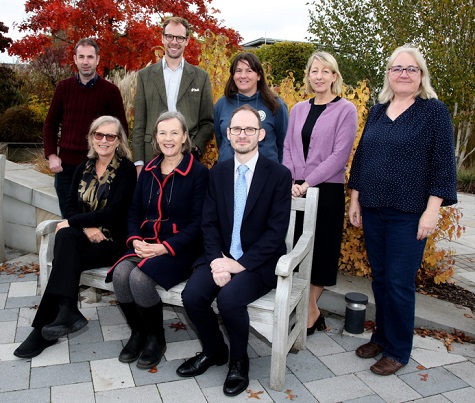
The Forum brings together a wide range of knowledge and skills to the charity to meet their strategic goals of improving green space through education, engagement, connection and support.
Membership of the organisation is open to organisations who manage or assist in the management of green spaces, and includes over 70 local authorities, parks trusts, small and large charities, and Open Space Community Forums such as those in Nottingham and Birmingham.
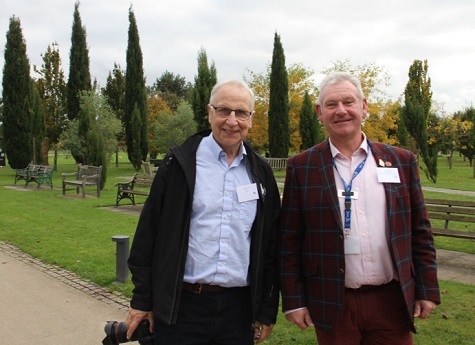
As a Green Flag judge, I knew many of the attendees at the recent event and am well acquainted with Andy Ansell, the National Memorial Arboretum’s estate manager who himself is a Green Flag judge. And once upon a time, he was a parks apprentice working with me when I was parks manager at Telford & Wrekin Council back in the late 1990s.
The hosts for the day were chair of the Midlands Parks Forum, Liz Stuffins and Chris Worman MBE - both experienced parks managers who welcomed everybody to the day’s proceedings.
Both Chris and Liz were keen to emphasise that placing urban green spaces at the heart of essential infrastructure is one of the greatest challenges of this generation of green space managers. The evidence is clear that urban green spaces are fundamentally important for improving mental and physical health, enhancing biodiversity, reducing pollution, mitigating flooding, tackling urban heat island effects and enabling access to nature.
The Midlands Parks Forum’s Growing Hope conference intention was to help the sector address some of the challenges by sharing the latest research and best practice, exploring the range of green skills required for the 21st century parks manager.
In attendance were well over 90 delegates from the length and breadth of the country. The day was spit into a morning and afternoon set of activities. The morning was centred around several presentations while the afternoon was a mix of workshops and a tour of the National Arboretum led by Andy Ansell.
The initial presentations saw a mix of interesting projects and informative ways of working, along with a talk on a new £15 million funding pot being made available for local authorities by Drew Bennellick of The Heritage Fund.
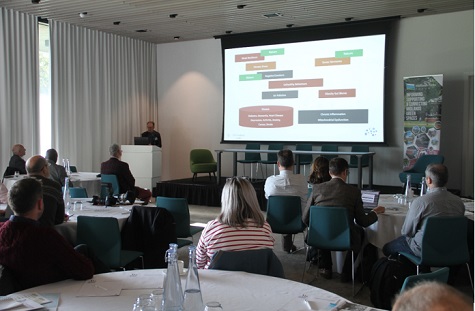
First up was an interesting talk by Dr William Bird MBE who set up Intelligent Health to build healthier, active and more connected communities. He is an advisor to the World Health Organisation, the Office for Health Improvement and Disparities and Sport England. William has been awarded an MBE for his contribution to health and physical activity.
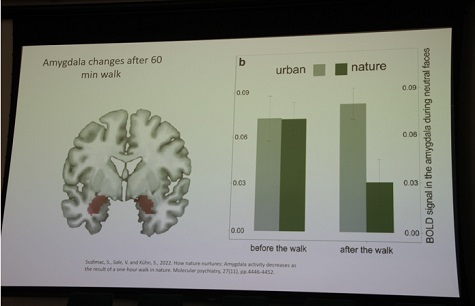
He gave plenty of examples of the benefits of having access to green spaces and how a 60-minute walk in a park would reduce a person’s stress levels dramatically.
He also spoke of evidence that people who live near parks and open spaces are less likely to be obese and will reduce their chances of getting diabetes. Many local authorities are now working with health and wellbeing partnerships to develop better relationships with these departments to improve the health of their communities. More importantly, Dr Bird spoke about the many benefits young children gain from being exposed to the opportunity of playing and being active in outdoor public open spaces.
Let’s hope that all this new evidence, and all that we have being producing since Covid regarding the value of what public and green open spaces bring to the community, is heard. Is it not time the government made it a statutory service?
Next up was a talk by Jason Fergus on the value of sport and activities in Essex and how they had achieved greater participation in these by using their valuable green open spaces.
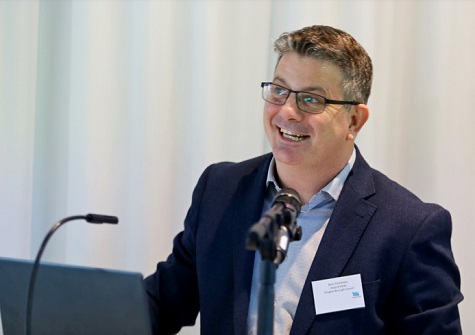
This was followed by a talk by Barry Emmerson, head of parks at Islington Borough Council, on how they have transformed and reframed their parks services into being a health service which plays a vital role in the early intervention, prevention and treatment of health problems in a community based environment.
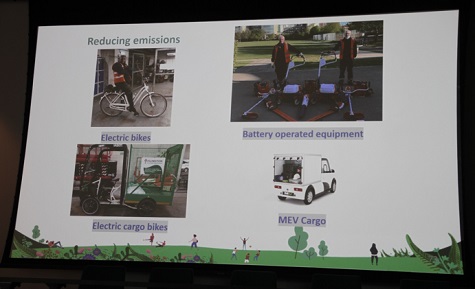
His colleague, Andrew Miller, gave examples of how they have improved the efficiencies of the work force by investing in battery powered, bikes, vehicles and machinery to help them do their job - while at the same time reducing their carbon footprint.
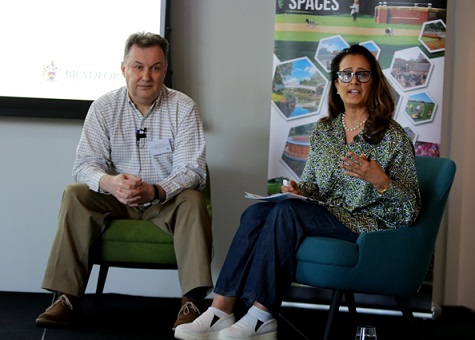
Next, we heard from Dr Saira Ali from Bradford City Council who, with colleague Richard Middleton, gave a talk on how Bradford was changing planning opportunities to increase biodiversity and are striving to create healthy green spaces in some of the most challenging places. They are also looking to engage and empower the community in working alongside themselves by embracing co-design principles.
After lunch it was time to spit into various working groups to take up the opportunity to converse with some of the speakers and have a tour of the National Memorial Arboretum.
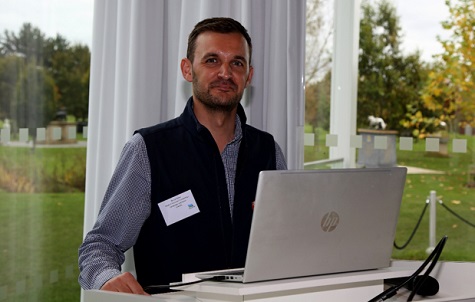
David Fisher From Lantra was on hand with Paul Rabbitts, chair of the Parks Management Association, to talk about parks professionals’ training and educational needs. This resulted in the completion of a questionnaire about the types of course they would like to help them with the many complex tasks they are expected to undertake as a parks and open space manager.
I remember from my own experiences of being a parks manager, you had to be a jack of all trades, with the ability to be able to communicate, write specifications, manage people and resources and much more. Talking to a lot of current parks managers, these requirements have greatly increased with the need to be more socially aware and savvy with new technologies and social media formats. That’s without the diverse landscape facilities each local authority has, along with their own different political agendas and reduced budgetary targets cuts.
Delegates were offered further workshops, exploring Trees Outside Woodlands with Jackie Shallcross from The Tree Council. Jackie has led on a £4.8m project gathering evidence on this project, and has just shared the report, which is of real value to communities. Another workshop was led by Simon Needle, strategic lead – Urban Forestry & Nature at Birmingham City Council who explored the role of parks and green spaces in a Local Nature Recovery Strategy which is currently in development.
Many delegates joined the glorious autumn afternoon tour of the arboretum Andy, getting an insight of the scale and size and national importance of this memorial Arboretum.
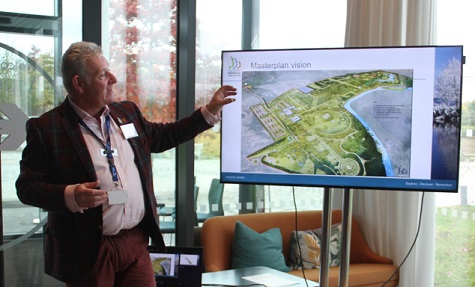
Andy has ten full-time staff to look after and maintain the 150-acre site. He is also blessed with the fact that the NMA has a strong volunteer force which can generally give him plenty of additional staff to help keep the site tidy and operational.
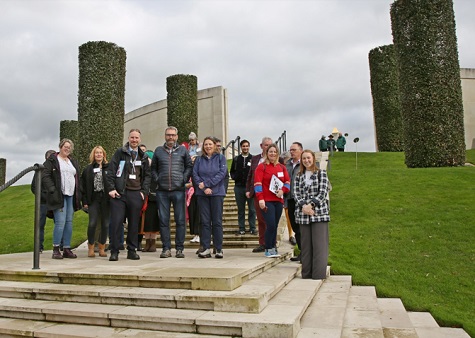
At the start of the tour, Andy gave a quick resume on the size and scale of the site and what new features are being planned in the form of more memorial garden areas, more car parks and the recent completion of the new entrance. We then saw a few of the main war memorials, dedicated to those who have lost their lives in active service.

Andy and his team are gearing up for this year’s Remembrance Day services and are working hard to ensure the site is ready for thousands of visitors who come to pay their respects. I have been several times and there is always something new to see. So it’s well worth a visit.
I would like to thank Liz Stuffins and the rest of the Midlands Parks Forum charity for putting on a well-organised conference at an outstanding venue. I shall be looking forward to attending further forum events in the future.